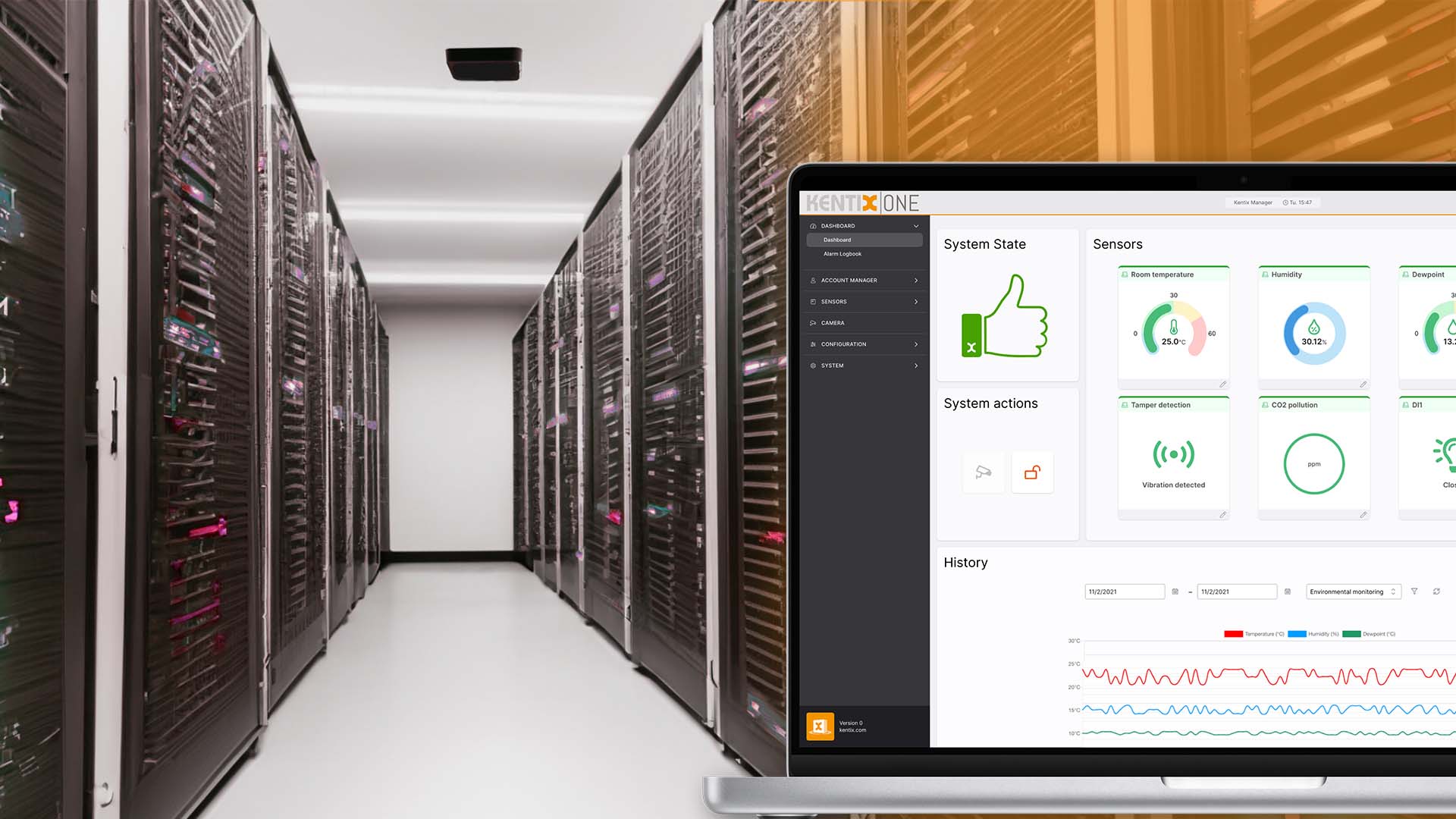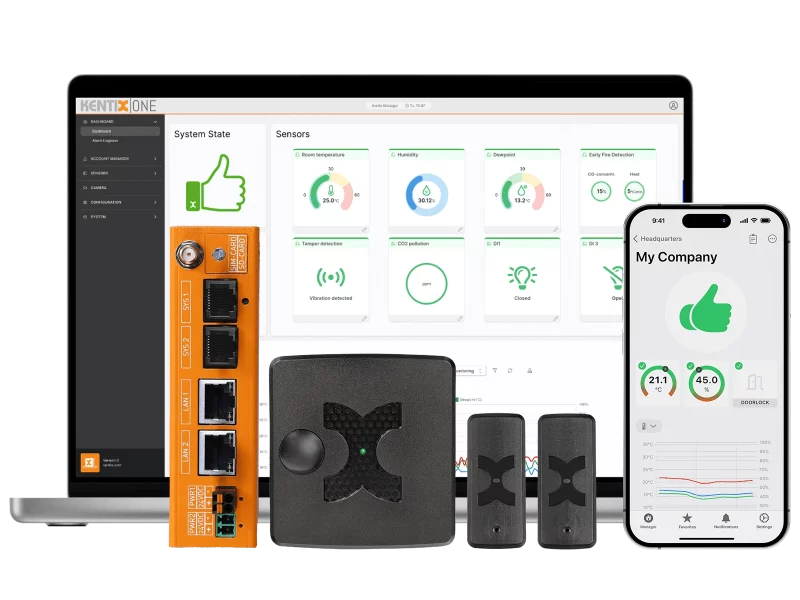Server room: temperature monitoring not just for compliance reasons
The importance of temperature monitoring and environmental monitoring in the server room
In today’s digital world, companies depend on reliable IT infrastructures to keep their business processes running. An important part of such an infrastructure is the server room, where the sensitive servers and network devices are housed. An often overlooked but crucial component for smooth operation is temperature monitoring using sensors.
Why is it so important to monitor the temperature in the server room?
The importance of temperature control cannot be overemphasized. The temperature in the server room has a direct impact on the performance and reliability of IT systems. Most electronic devices, especially servers and network equipment, generate a considerable amount of heat during operation. If the temperature in the server room is not properly controlled, this can lead to the devices overheating. On the other hand, too low a temperature can cause moisture, which in turn promotes condensation and corrosion. Careful monitoring and control of the room temperature is therefore crucial to ensure the safety and stability of the server room. To minimize these risks, it is crucial to monitor the temperature in the server room.
Optimum temperature in the server room and effects of overheating
Ideally, the temperature in the server room should be kept constant, usually between 20 and 24 degrees Celsius. By using temperature sensors, the environmental monitoring system can automatically generate alerts when the temperature exceeds a preset threshold. This enables operators to react quickly and take appropriate measures to prevent overheating.
The effects of overheating in the server room can be serious. If the servers or network components overheat, this can have serious financial and business consequences:
- Wear and tear
- Drop in performance
- Hardware failure
- Data loss (impairment of the stability of the storage media)
- Expensive repairs / replacement of components
- Downtime and lower productivity
- Fires (more about early fire detection)
By effectively monitoring the temperature, companies can protect their IT investments and maximize the service life of their servers and network equipment.
In addition, temperature monitoring helps to optimize energy efficiency in the server room. By monitoring and analyzing the room temperature, companies can control cooling more efficiently and reduce unnecessary energy consumption. This can lead to significant cost savings, especially for large data centers that require a considerable amount of energy for cooling.
Other important environmental monitoring parameters
In addition to temperature, monitoring other environmental parameters using sensors is also very important. Humidity is another important factor that needs to be controlled. Too high humidity can lead to corrosion of components, while too low humidity can lead to static electricity and electrical discharges.
The Kentix Multisensor does just that – and more. The integrated sensors continuously monitor temperature, humidity, dew point, smoldering fire (CO), air quality, air pressure, movement, acceleration/vibration. This protects the server room against a variety of impending physical dangers. In addition, environmental monitoring can also improve protection against water ingress. By installing water leakage sensors, potential sources of danger from liquid ingress or leakage can be detected at an early stage. The Kentix leakage sensor is the perfect addition to server room monitoring and can be easily connected to the multisensor. This enables a timely response to minimize damage to the IT infrastructure.

